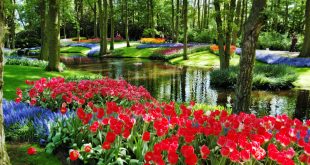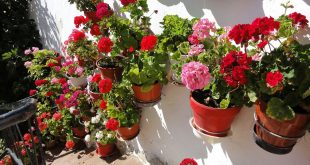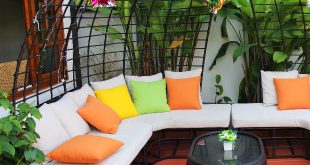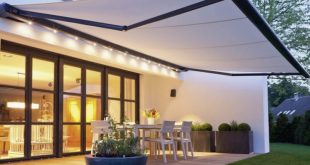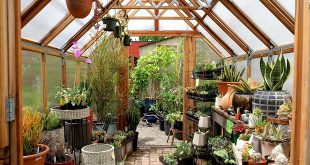Indoor gardening has witnessed a surge in popularity in recent years, captivating the hearts of plant enthusiasts and novices alike. As our lives become busier and living spaces more compact, the popularity of indoor gardens has been on the rise.
Not only do indoor plants bring nature’s beauty into our homes, but they also offer a range of benefits. This is why Market.us predicts that the indoor farming market is projected to reach $93.0 billion by 2032 with a CAGR of 10.9%. So let’s get into this article to explore the tips on how you can create your own low-maintenance indoor garden.
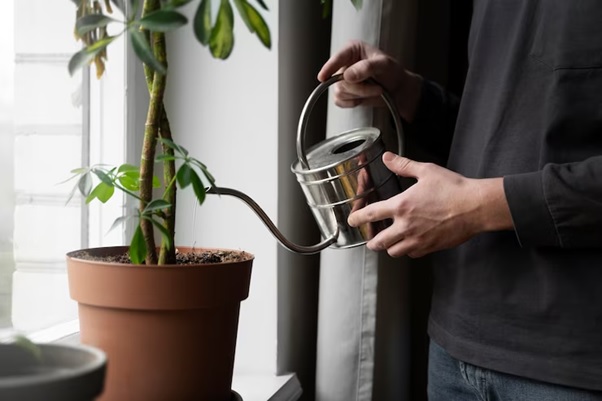
Image: freepik.com
Choosing the Right Plants
When it comes to creating a low-maintenance indoor garden, selecting the right plants is key. Understanding the light requirements of different plants is essential for their survival and growth. Some plants thrive in shady areas with limited sunlight, while others require abundant sunshine to flourish.
Low-light plants for shady areas:
If your living space lacks direct sunlight, don’t worry! There are plenty of plants that can thrive in low-light conditions. Consider adding ferns, pothos, or snake plants to your indoor garden. These resilient beauties can add a touch of greenery and purify the air, even in the darkest corners of your home.
High-light plants for sunny spots:
On the other hand, if you have sunny spots in your home, take advantage of them by selecting plants that love the sun. Succulents, cacti, and flowering plants like orchids and African violets are great options. Just make sure to provide them with the right amount of sunlight and avoid overexposure, as it may lead to sunburned leaves.
Furthermore, consider the size and growth habits of the plants you choose. Opt for compact varieties if you have limited space, or if you prefer larger plants, ensure that they won’t outgrow their designated areas quickly. This careful selection will save you the hassle of constant pruning and rearranging.
Don’t forget to pick plants that are suitable for indoor garden conditions. Some plants require high humidity, while others prefer drier environments. Be mindful of your home’s humidity levels and choose plants accordingly. For low-humidity environments, consider plants like aloe vera, spider plants, or ZZ plants. They can thrive even in dry conditions and are relatively low-maintenance.
Planning the Layout
Now that you have chosen the perfect plants for your indoor garden, it’s time to plan the layout. A well-thought-out arrangement can enhance the visual appeal of your space and create a harmonious atmosphere. Here are some essential tips to consider:
Analyzing the available space:
Take a step back and analyze your indoor space. Identify the areas where you intend to place your plants. Consider the existing furniture, windows, and doors to determine the best layout. This analysis will help you make the most of the available space and prevent overcrowding.
Determining the focal point of the garden:
Every garden needs a focal point—a captivating element that draws the eye and adds interest. It could be a large plant, a beautiful terrarium, or a unique piece of artwork. Experiment with different focal points to find the one that resonates with your style and creates a visually appealing focal area in your indoor garden.
Creating visual interest with different heights and textures:
To create an engaging and dynamic indoor garden, play with various heights and textures. Combine trailing plants like ivy or string of pearls with tall, upright plants such as corn plants or snake plants. Integrate plants with different leaf shapes and sizes to add texture and diversity to your garden oasis.
Arranging plants in a functional and aesthetically pleasing way:
Place your plants strategically to ensure both functionality and aesthetic appeal. For example, position taller plants at the back or in corners to provide a natural backdrop, while shorter plants can be placed in the foreground or on shelves to create layers of greenery. Consider the growth habits of each plant to avoid overcrowding and allow proper air circulation.
Incorporating decorative elements and accessories:
Lastly, don’t hesitate to add decorative elements and accessories to elevate the overall look of your indoor garden. Consider incorporating beautiful pots, hanging baskets, or macramé plant hangers to showcase your plants in style. These additions can enhance the ambiance of your space and reflect your personal taste and creativity.
Proper Container Selection
Choosing containers based on plant size and root system:
When selecting containers for your indoor garden, it’s important to consider the size and growth habits of your plants. Ensure that the containers provide enough space for the plant’s root systems to grow and expand. Large plants with extensive root systems may require deeper pots, while smaller plants can thrive in shallower containers.
Evaluating the drainage capabilities of containers:
Adequate drainage is crucial for the health of your indoor plants. Choose containers with drainage holes at the bottom to allow excess water to escape. Proper drainage prevents waterlogging, which can lead to root rot and other problems. If you fall in love with a container without drainage holes, consider using it as a decorative outer pot and placing a smaller, well-draining container inside.
Selecting containers that match the overall design and style:
Containers come in a wide variety of shapes, colors, and materials, allowing you to create a visually appealing indoor garden. Consider the overall design and style of your space and choose containers that complement the aesthetics. Whether you prefer sleek and modern containers or rustic and vintage ones, finding containers that align with your vision will enhance the overall ambiance of your indoor garden.
Considering the materials used in containers:
Different materials have varying effects on the moisture levels and temperature regulation within containers. Clay pots, for example, are porous and allow air and moisture to pass through, promoting better root health. Plastic containers, on the other hand, tend to retain moisture for longer periods, reducing the frequency of watering. Consider the specific needs of your plants and choose containers made of materials that best suit their requirements.
- Clay pots and their benefits: Clay pots are a popular choice among indoor gardeners due to their natural and breathable properties. They allow for better airflow to the plant’s roots and can help regulate moisture levels. Additionally, clay pots are sturdy and durable, making them a long-lasting option for your indoor garden.
- Plastic containers and their advantages: Plastic containers offer several advantages for low-maintenance indoor gardens. They are lightweight, making it easier to move and rearrange your plants. Plastic containers also retain moisture well, reducing the frequency of watering. Moreover, they come in various colors and styles, allowing for creative and versatile design options.
Soil and Watering Strategies
Understanding the importance of well-draining soil:
Well-draining soil is essential for maintaining a low-maintenance indoor garden. It allows excess water to flow through the soil, preventing waterlogging and root rot. Choose a high-quality potting mixture specifically formulated for indoor plants. These mixtures often contain ingredients like perlite or vermiculite, which improve drainage and aeration.
Using high-quality potting mixtures:
Investing in a high-quality potting mixture is vital for the health and growth of your indoor plants. These mixtures are typically lightweight, well-draining, and rich in nutrients. Avoid using garden soil alone, as it may be too heavy and compact for container gardening. High-quality potting mixtures provide a balanced environment for your plants’ roots and contribute to their overall well-being.
Incorporating amendments to improve soil structure and fertility:
Enhancing the soil structure and fertility can significantly benefit your indoor garden. Consider adding organic amendments such as compost, peat moss, or aged manure to improve moisture retention, nutrient availability, and overall soil health. These amendments contribute to the long-term success and vitality of your plants.
Implementing watering techniques suitable for indoor gardens:
Watering is a critical aspect of maintaining a healthy indoor garden. Develop a watering routine that aligns with the needs of your plants while keeping maintenance efforts to a minimum. The following watering strategies can help simplify your routine:
- Plant watering requirements: Plants have different water needs. Some plants like wet soil, while others like dry. Group your plants according to their watering demands. This grouping lets you water comparable plants at once, simplifying your watering schedule.
- Self-watering devices and moisture meters can transform low-maintenance indoor gardening. These systems store water and slowly release it to plant roots. If you travel or have a hectic schedule, they reduce the risk of overwatering or underwatering. Moisture meters can also help you assess soil moisture and determine when to irrigate.
Providing Adequate Light
Assessing the natural light availability in the space:
Light is an essential factor for the health and growth of indoor plants. Evaluate the natural light availability in your space to determine which plants will thrive there. Observe the intensity, duration, and direction of sunlight throughout the day. Different plants have varying light requirements, ranging from low light to bright, indirect light. Place plants accordingly to ensure they receive the optimal amount of light.
Supplementing natural light with artificial lighting:
If your indoor space lacks sufficient natural light, supplementing it with artificial lighting is key to maintaining a low-maintenance indoor garden. Choose the right type of artificial lighting based on the needs of your plants and the specific conditions of your space. Artificial lighting can help compensate for the lack of sunlight and provide a consistent light source for your plants.
Choosing the right type of artificial lighting:
When it comes to artificial lighting for indoor gardens, two popular options are fluorescent lights and LED lights. Both have their advantages and can effectively support plant growth.
- Fluorescent lights and their benefits: Fluorescent lights are widely used in indoor gardening due to their affordability and energy efficiency. They provide a wide spectrum of light for plant growth. Fluorescent lights are ideal for indoor plants that need low to medium light.
- LED lights and their advantages: Indoor gardeners love LED lights for their energy efficiency and versatility. LEDs can emit photosynthesis-specific wavelengths. They generate little heat, so they can be placed near plants without harming them. LED lights are ideal for crops with high light needs and those who want to customize the light spectrum for optimal growth.
Maintaining a Low-Maintenance Routine
Establishing a regular watering schedule:
Consistency is key when it comes to watering your indoor plants. Establish a regular watering schedule that suits the needs of your plants and stick to it. This routine ensures that your plants receive adequate moisture without the risk of overwatering. Consider using reminders or alarms to help you maintain a consistent watering routine.
Monitoring and adjusting humidity levels:
Indoor environments can sometimes have low humidity, which can adversely affect certain plants. Monitor the humidity levels in your indoor garden and make adjustments as needed. You can increase humidity by grouping plants together, using a humidifier, or placing trays of water near the plants. On the other hand, if you have plants that prefer drier conditions, ensure proper ventilation to prevent excess humidity.
Controlling pests and diseases:
Preventing and managing pests and diseases is crucial for maintaining a low-maintenance indoor garden. Regularly inspect your plants for any signs of pest infestation or disease. If detected, take immediate action using organic pest control methods or appropriate treatments. Avoid overusing chemical pesticides, as they can disrupt the natural balance of your indoor garden.
Pruning and grooming plants:
Regular pruning and grooming help promote healthy growth and maintain the aesthetic appeal of your indoor garden. Remove any dead or yellowing leaves, trim overgrown branches, and shape the plants as needed. Pruning also helps improve air circulation, reducing the risk of fungal diseases.
Fertilizing indoor plants appropriately:
Proper fertilization ensures that your indoor plants receive the necessary nutrients for optimal growth. Use a balanced indoor plant fertilizer or organic alternatives. Follow the instructions provided by the manufacturer for application rates and frequency. Avoid over-fertilizing, as it can lead to salt buildup and damage the plants.
Troubleshooting Common Challenges
Addressing issues with inadequate lighting:
Inadequate lighting can lead to stunted growth, leggy stems, or pale leaves in indoor plants. If you notice these symptoms, consider relocating your plants to a spot with better lighting conditions. Alternatively, supplement natural light with artificial lighting to ensure your plants receive the light they need.
Dealing with overwatering or underwatering:
Overwatering or underwatering is a common challenge in indoor gardening. Monitor the moisture levels of the soil and adjust your watering routine accordingly. Remember that different plants have different water requirements, so tailor your watering approach to suit their needs. Using moisture meters can be helpful in determining the optimal moisture levels.
Managing common pests and diseases:
Indoor plants can be susceptible to pests like aphids, spider mites, or fungus gnats, as well as diseases such as powdery mildew or root rot. Promptly identify and address pest and disease issues through appropriate treatments or organic pest control methods. Regularly inspect your plants to catch problems early and prevent them from spreading.
Preventing nutrient deficiencies:
Nutrient deficiencies can manifest as discolored leaves, stunted growth, or poor overall health in plants. Ensure you provide a balanced fertilizer and follow the recommended application rates. Regularly monitor the nutrient levels in your soil and make adjustments as needed. If deficiencies persist, consult a plant care specialist for further guidance.
Reviving stressed or struggling plants:
Sometimes, despite your best efforts, plants can become stressed or struggle to thrive. Assess the conditions in which the plant is growing and make necessary adjustments. This may include changing the lighting, adjusting the watering routine, or providing additional care such as misting or pruning. With patience and appropriate interventions, you can often revive stressed plants and encourage their recovery.
Just like our indoor gardens, our lives flourish when we find the perfect balance. In nurturing our plants, we discover the art of patience, observation, and adaptation. By designing a low-maintenance indoor garden, we not only create a tranquil sanctuary but also cultivate the qualities that help us thrive in our own lives.
 World inside pictures Collect and share the best ideas that make our life easier
World inside pictures Collect and share the best ideas that make our life easier
